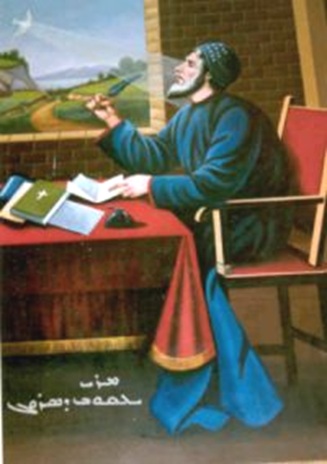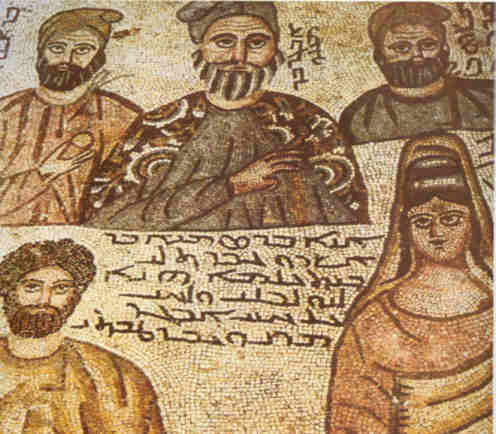|
Jacob of Sarug
Who made the East- Aramean Nestorians known as "Assyrians"?
SUA/WCA and allowing terrorism
Aramean history, history, culture and language, a six partite interview
2-5-2016: After the Turks come Kurds.... Arameans, Gog and Magog......
17-2-2016: Chemical attack on Ghouta, Damascus in 2013, Arameans, Kurds and Turks....
17-7-2015: Turkey, Syria and Iraq: Arameans, the downfall of an indigenous nation, part II
21-4-2015: Austria Recognizes Armenian Genocide
20-4-2015: Germany, defying Turkey, to call 1915 Armenian massacre 'genocide'
15-4-2015: European Parliament votes to call 1915 Armenian killings genocide
23-3-2015: Hundred year Aramean Genocide: Old and New genocide. ISIS/ISIL terrorists attack Arameo- Assyrian and Arameo- Chaldean villages in Khabour in Syria
30-6-2014: More and more Kurds recognize their own role in the Ottoman genocide……
28-4-2014: Ottoman genocide: 99 years ago, will it be recognized before its 100th anniversary?
7-1-2014: The two Aramean bishops: used as blackmail and bargaining instrument by odious powers…
11-11-2009: Prime minister of Turkey: A Muslim can never commit genocide
28-2-2009: Turkey, Kurds, the Aramean monastery St. Gabriel and worldwide Aramean protest.
4-7-2007: Aramean – Armenian Massacres of the Ottoman Times: a Kurdish Responsibility
|
Aramean people: Aramean people (not to be confused with ‘Armenians’) speak Aramaic, the language spoken by Abraham, Moses and Jesus. They are the indigenous people of what was called in ancient times Aram- Nahrin, in our days it is called ‘Mesopotamia’. Some Arameans today identify themselves with “Assyrians”, because of the spiritual colonial hate generating activities of the Western missionaries and diplomats in the Middle-East in 16th and 19th centuries. Other Arameans became known as “Chaldeans”. However all of them are Arameans. In Turkey, the Arameans are called: Süryani. In Arabic they are called Al- Suryan.
Arameans of Turkey, Tur Abdin, the Aramean monastery St. Gabriel
Source: http://www.todayszaman.com/tz-web/detaylar.do?load=detay&link=174393&bolum=101
Arameans send letter to president, PM demanding rights
The Turabdin Solidarity Committee (Solidaritattsgruppe), an umbrella organization for the diaspora Arameans from Turkey, sent a letter to President Abdullah Gül and Prime Minister Recep Tayyip Erdoğan about the situation of Arameans in Turkey and asked to be treated in accordance with the Lausanne Treaty and auspices of the state.
In the letter, the Arameans also noted that the Prophet Jesus spoke in Aramaic and the state should give the permission and financial support for Aramaic language courses. The letter also underlined the concerns of the Arameans regarding the ongoing trial over the Mor Gabriel Monastery, which was constructed in A.D. 397.
The row began when the Turkish government land officials redrew the boundaries around Mor Gabriel and the surrounding villages in 2008 in order to update the national land registry as part of a cadastre modernization project in compliance with EU instructions. The monks say the new boundaries have turned over large plots of land that the monastery has owned for centuries to the villages, and it designates the monastery's land as a public forest. Christian groups believe the officials want to ultimately stamp out the Aramean Orthodox monastery. Their allegations come as the EU has demanded that the ruling Justice and Development Party (AK Party) government do more to promote religious freedom along with its liberal economic and political reforms.
Meanwhile, three neighboring villages -- Çandarlı, Yayvantepe and Eğlence -- have complained that the monks have engaged in "anti-Turkish activities" and alleged that they are illegally converting children to Christianity, that the Mor Gabriel Community Foundation settles wherever it chooses --without having the requisite permits -- and that it violates the Unity of Education Law. The villagers also have accused the monastery of taking the land the villagers need for cattle. The hearings in the dispute will be held this month.
The letter reiterated the importance of the Mor Gabriel Monastery for Christian history and claimed that the cases against the monastery were directly linked with the basic rights and problems of the Christians in Turkey.
"Accordingly, these problems were raised because most of the Aramean villages in Turabdin [Aramaic name for a part of the Mardin and Şırnak] are facing similar problems and struggling against them. In short, the status and the minority rights of Arameans is the issue," the letter said.
The Turabdin Solidarity Committee also claimed that the number of Arameans still living in the area is around 2,000, but "their existence is in danger due to the growing hostility against them."
The letter suggested that since the establishment of the republic, the Arameans were not recognized as a religious nor ethnic minority and were not able to enjoy the rights granted by the Lausanne Treaty, which was signed in 1923 and served as the founding agreement for the Turkish Republic. The treaty organizes the rights of the non-Muslim citizens of Turkey -- without indicating specific group names -- but, practically, these rights are applied only to the Jewish, Greek and Armenian minorities of Turkey, according to a recent report of the Turkish Economic and Social Studies Foundation (TESEV).
The letter underlined that within this framework, the Arameans demand the recognition of their culturally rich existence and want the special auspices of the state. The letter also demands: "the monasteries and churches that belong to the Arameans should be preserved by the state without taking them away from their owners, religious freedom, not only the permission to open religious schools, but financial support for them and permission to teach language courses."
The letter claimed that if these demands were met, then the Arameans of Turkey will be able to plan their future freely and contribute to the development of Turkey
Copyright © Aram-Naharaim Organization. All rights reserved.
|
Letters to governments and international institutions
Aramean Spiritual/ Physical Genocide
Fake News on the Aramean nation:
7-5-2009: Arameans of Turkey, the Aramean monastery St. Gabriel
|

